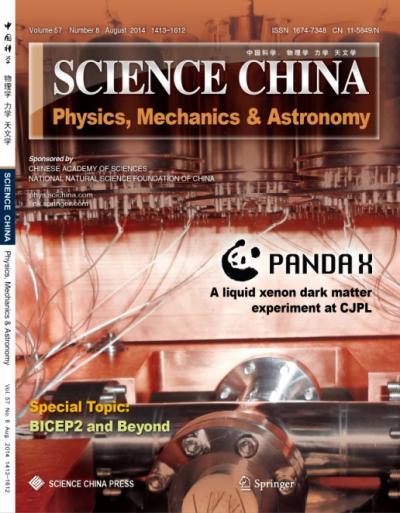The PandaX experiment of China, which is located in the deepest underground laboratory, has released its technical design report recently. The full article will appear in SCIENCE CHINA Physics, Mechanics & Astronomy, 2014, 57(8): 1476-1494.
The Particle and Astrophysical Xenon (PandaX) collaboration was established in 2009 and mainly supported by the Ministry of Science and Technology, the Ministry of Education in China, the Natural Science Foundation of China,and Shanghai Jiao Tong University. The experiment is suitable for both direct dark matter detection and Xe-136 neutrinoless double beta decay search.
The experiment employs the most promising Xenon dual-phase technology to capture both the primary scintillation and the ionization from proportional scintillation, similar to the XENON and LUX experiments. At current stage, the experiment is running at a target mass about 120kg, similar to that of XENON100. The detector could be upgraded to half-ton scale mass shortly.
The China Jinping underground laboratory (CJPL), shielded by 2,400 meters of low radioactive rocks, provides a well protection for PandaX against the cosmic muons. The muon flux was measured to be the lowest one among all the similar experimental facility so far. In addition, a passive shield consists of about 100 tons of PE, lead, and copper was constructed to attenuate the neutrons and gammas from environmental materials, such as cavern wall rocks and concrete. Given these efforts, the PandaX detector is running within a low background environment.
A reliable cryogenic and gas-handling system for PandaX was built and operated successfully in the past several years. The facility was moved into CJPL in August, 2012.
The Xenon dual-phase technology was verified in the two commissioning runs in 2013 and early 2014, in which the key parameters of the experiment, such as the light yield, were measured. The experiment started to take science data from late March, 2014.
The first result of PandaX is expected to be released late this year.

The PandaX experiment of China, which is located in the deepest underground laboratory (2,400 m), has released its technical design report recently. The full article will appear in SCIENCE CHINA Physics, Mechanics & Astronomy, 2014, 57(8): 1476-1494.
(Photo Credit: ©Science China Press)
Source: Science China Press